New products at Crocus
by Sarah - September 3rd, 2010.Filed under: Crocus, New Products.
Loads of new products today at Crocus
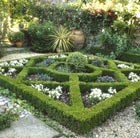
common box £39.99
Position: partial shadeSoil: fertile, well-drained soilRate of growth: slow-growingHardiness: fully hardyTo find out more about how to plant a hedge, click hereCommon box makes a fabulous formal hedge for a partially shady site, forming a dense, evergreen screen of small, rounded, lustrous, dark green leaves. One of our recommended plants, it’s an excellent backdrop for traditional herbaceous borders. Box is happy growing in a sunny spot but the combination of dry soil and full sun may encourage poor growth and leaf scorching. If you have sandy soil, it is best to keep it in a partially shady spot in the garden.Garden care: For maximum results plant 30cm (12in) apart in well-prepared, fertile soil and water regularly until well established.Ensure that the soil or compost is never allowed to dry out. Carefully trim plants grown as hedges or topiary in mid- or late summer. Carry out rejuvenative pruning in late spring. After pruning apply a top-dressing of a balanced slow-release fertiliser such as blood, fish and bone (organic) or Osmacote (inorganic) around the base of the plant, ensuring that none touches the leaves or stems.

mixed daffodil collection £34.99
Position: full sun or partial shadeSoil: well-drained soil Rate of growth: average to fast-growingFlowering period: March and April Flower colour: shades of golden-yellow and pure whiteOther features: strap-shaped, dark green leaves; excellent as cut-flowers; contact with the sap may cause skin irritationHardiness: fully hardySplendid, single and bi-coloured flowers in shades of golden-yellow and pure white in March and April. This collection of top-quality daffodils and narcissi is ideal for naturalising in a sunny, well-drained border or lawn. To guarantee a colourful display and a supply of excellent cut-flowers plant 10-15cm (4-6in) deep in late summer or early autumn.Garden care: Plant 10-15cm (4-6in) deep from late summer to early autumn. After flowering feed with a balanced fertiliser, dead-head and allow the leaves to die back naturally.

common box – ball £34.99
Position: partial shadeSoil: fertile, well-drained soilRate of growth: slow-growingOther features: contact with the sap may cause skin irritationHardiness: fully hardyA pair of these tightly clipped box spheres look great flanking a set of steps, a doorway or a path. One of our recommended plants, they’re perfect for planting in a large terracotta pot in a partially shady site, where the glossy, dark-green leaves provide all year foliage interest and structure. Box are happy growing in a sunnier spot, but the combination of dry soil and full sun may encourage poor growth and leaf scorching. If you have sandy soil it is best to keep them in a partially shady spot in the garden.Garden care: Ensure that the soil or compost is never allowed to dry out. Carefully cut back plants grown as hedges or topiary in mid- or late summer. Carry out rejuvenative pruning in late spring. After pruning apply a top-dressing of a balanced slow-release fertiliser such as blood, fish and bone (organic) or Osmacote (inorganic) around the base of the plant, ensuring that none touches the leaves or stems.

common box – cone £29.99
Position: partial shadeSoil: fertile, well-drained soilRate of growth: slow-growingOther features: contact with the sap may cause skin irritationHardiness: fully hardyThese evergreen box pyramids are ideal for a formal garden or courtyard. Best planted in fertile, well-drained soil in a partially shady site, they’re perfect for punctuating the end of a dwarf hedge or for use in pairs for flanking a set of steps, a doorway or path.Box are happy growing in a sunny spot but the combination of dry soil and full sun may encourage poor growth and leaf scorching. If you have sandy soil it is best to keep them in a partially shady spot in the garden.Garden care: Ensure that the soil or compost is never allowed to dry out. Carefully cut back plants grown as hedges or topiary in mid- or late summer. Carry out rejuvenative pruning in late spring. After pruning apply a top-dressing of a balanced slow-release fertiliser such as blood, fish and bone (organic) or Osmacote (inorganic) around the base of the plant, ensuring that none touches the leaves or stems.
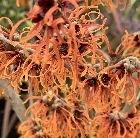
witch hazel £24.99
Position: full sun or partial shadeSoil: moderately fertile, moist, well-drained neutral to acid soilRate of growth: slow-growingFlowering period: January to FebruaryHardiness: fully hardyIn winter, this vase-shaped, deciduous shrub has clusters of sweetly scented, fiery orange flowers clinging to bare twigs. In autumn, the bright green leaves turn spectacular shades of yellow, orange and red. The tiered branches of this award-winning variety of witch hazel contrast well with the vertical stems of dogwood. A lovely specimen plant for a sunny winter border or woodland edge, where its perfume can be appreciated. The flowering twigs can be cut to perfume rooms in winter.Garden care: In early spring remove any misplaced, crossing or diseased branches and apply a generous 5-7cm (2-3in) mulch of well-rotted compost or manure around the base of the plant.
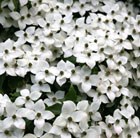
Chinese dogwood £24.99
Position: full sun to part shadeSoil: fertile, humus-rich, well-drained, neutral to acid soilRate of growth: slow-growing to averageFlowering period: May to JuneHardiness: fully hardyA real showstopper of a tree, with two seasons of interest. Broadly conical in shape, it produces tiny green flowers in June, surrounded by showy creamy white, flower bracts, that fade to lovely shades of pink. In autumn the dark green leaves turn crimson-purple and mature trees produce strawberry-like fruits. It’s an exc excellent specimen tree for a small garden or woodland edge, and the leaf colour is best in fertile, well-drained, neutral to acid soil.Garden care: Incorporate a good amount of well-rotted leafmould when planting. Requires minimal pruning.
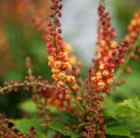
mahonia £17.99
Position: full sun to partial shadeSoil: moderately fertile, humus-rich, moist or well-drained soilRate of growth: averageFlowering period: August to NovemberHardiness: fully hardyThis delightful new introduction has only recently become available, so we are one of the first to offer it for sale in the UK. It has the same glossy, holly-like, evergreen foliage, that you would expect to see on a Mahonia, but this compact variety produces its flowers from the end of summer and all the way through autumn. These appear initially as elegant racemes smothered with bright orange-red buds, that open from the base of the spike to reveal cheerful yellow flowers. Once the flowers have faded, bluish-grey berries form, which contrast beautifully with the winter foliage.Garden care: Apply a generous 5-7cm (2-3in) mulch of well-rotted garden compost or manure around the base of the plant in spring.
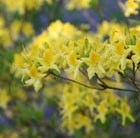
deciduous azalea £15.99
Position: partial shadeSoil: moist, well-drained, humus-rich, acid soil or ericaceous compostRate of growth: fast-growingFlowering period: May and JuneFlower colour: yellowOther features: vivid bonfire shades in autumnHardiness: fully hardySweetly scented, yellow, funnel shaped blooms in May and June and mid green leaves, which take on vivid bonfire shades in autumn. This vigorous, deciduous azalea looks great planted in a mixed border with other evergreen trees or shrubs. As long as it’s given moist, well-drained acid soil it will tolerate full sun.Garden care: Avoid planting too deeply. Apply a generous 5-7cm (2-3in) mulch of leaf mould around the base of the plant each spring.
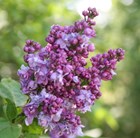
common Lilac £14.99
Position: full sunSoil: fertile, humus-rich, well-drained, neutral to alkaline soilRate of Growth: averageFlowering period: May and JuneFlowers: dark purpleOther features: heart shaped, dark green leavesHardiness: fully hardyDense clusters of fragrant, double, dark purple red flowers in May and June and heart shaped, dark green leaves. This dramatic, dark purple lilac makes an excellent backdrop for a sunny mixed or shrub border. The plant copes well with alkaline soils, an important factor when planting ground recently cleared of builders’ rubble.Garden care: In mid summer remove the faded flower heads carefully using secateurs to avoid damaging the young shoots Apply a generous 5-7cm (2-3in) mulch of well-rotted garden compost or manure around the base of the plant in early spring.
common Lilac £14.99
Paper Bush £14.99
magnolia £14.99
common Lilac £14.99
tree poppy £14.99
oak-leaved hydrangea £14.99
magnolia £14.99
deciduous azalea £14.99
deciduous azalea £14.99
common Lilac £14.99
Plus…
12 products from Garden | shrub
8 products from Garden | perennial
2 products from Garden | ferns
2 products from Garden | climber






